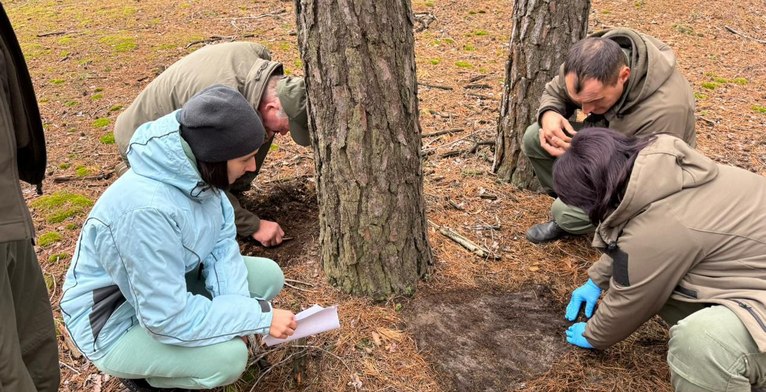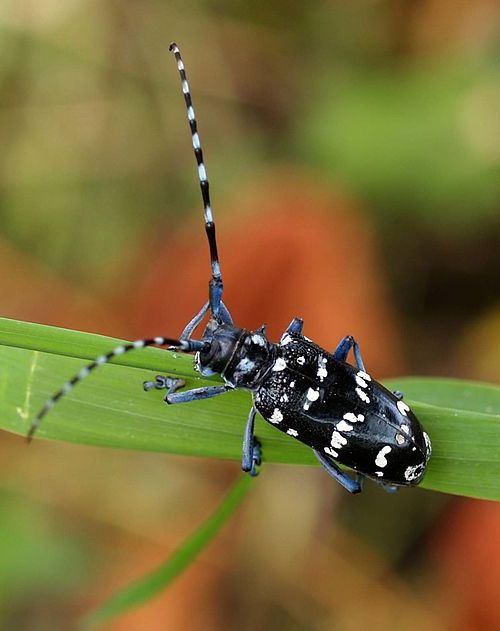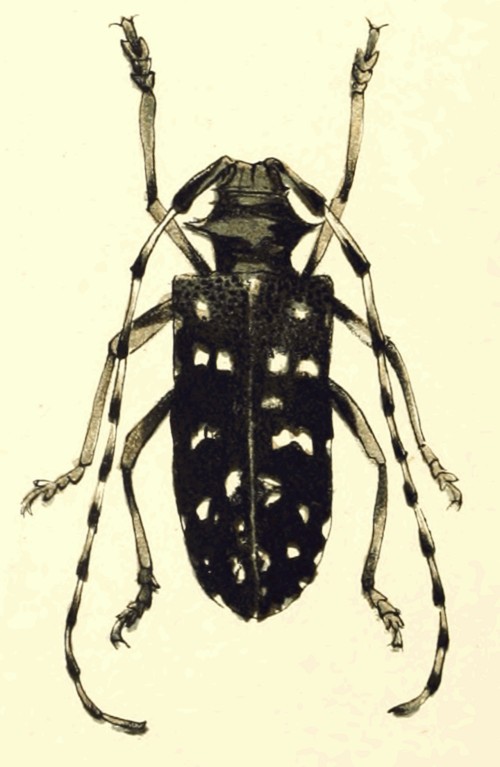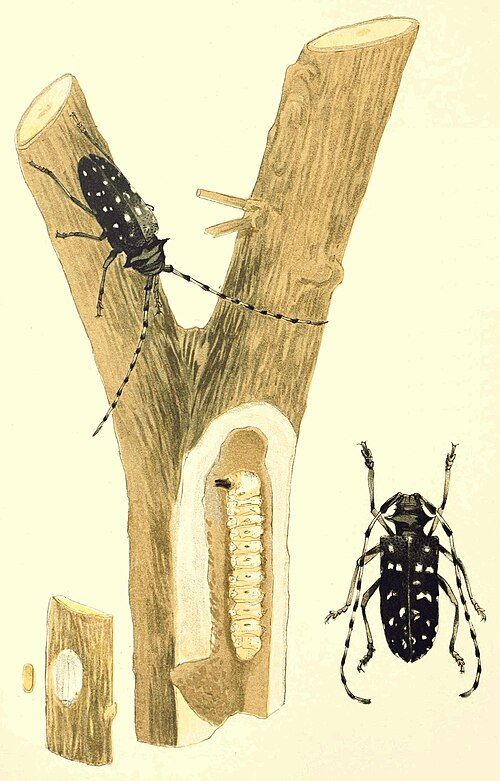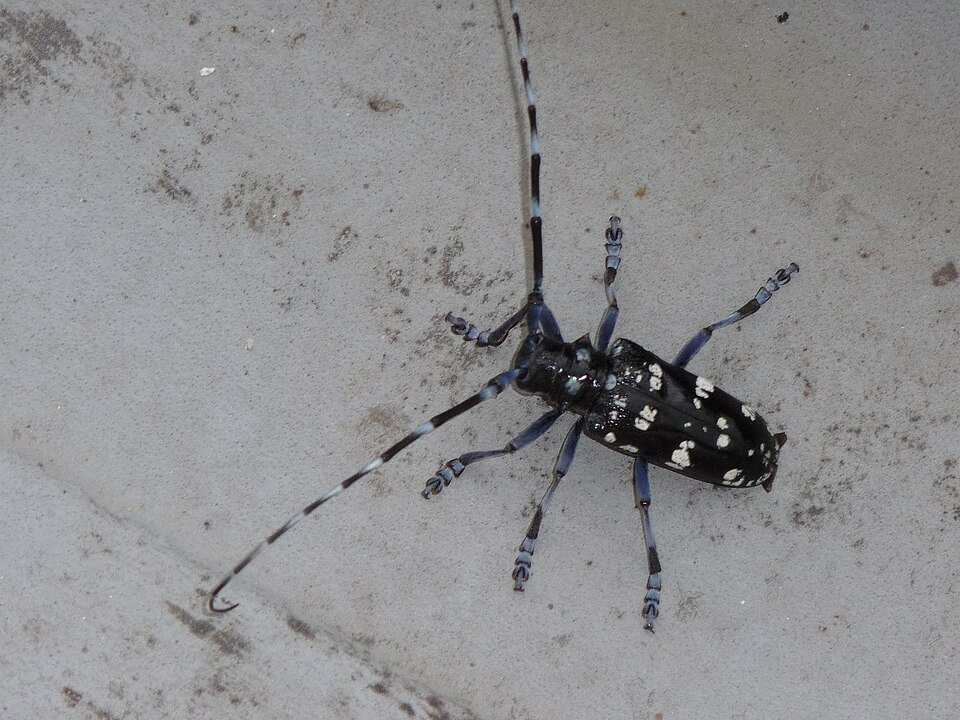Anoplophora chinensis (Forster, 1771) – a species of beetle from the subfamily Lamiinae of the longhorn beetle family (Cerambycidae), known as the citrus longhorned beetle or citrus long-horned beetle. This invasive species poses a serious threat to forestry and agriculture in many regions of the world.
1. Systematics and Description
Taxonomy of the species includes: Kingdom: Animalia, Phylum: Arthropoda, Class: Insecta, Order: Coleoptera, Family: Cerambycidae, Subfamily: Lamiinae, Genus: Anoplophora, Species: Anoplophora chinensis. The species includes two subspecies: Anoplophora chinensis chinensis (nominate subspecies) and Anoplophora chinensis malasiaca.
Morphology
Adults have a body length of 22–40 mm, black or dark brown coloration with white or bluish spots on the elytra. Characteristic features: smooth, shiny elytra with a granular structure at the base, long antennae (exceeding body length in males), pronotum with an uneven surface and spines on the sides.
Eggs are oval, white or cream-colored, about 5 mm in size. Larvae reach up to 45 mm in length, white or yellowish in color, with powerful mandibles adapted for gnawing wood. The pupa develops inside the wood, chewing an exit hole before the adult emerges.
2. Distribution
Native range includes East Asia (China, including Taiwan, Korea, Japan) and Southeast Asia (Myanmar, Vietnam, Philippines, Malaysia, Indonesia). The species actively spreads with wood material (packaging, saplings) to other regions: Europe (Italy, Germany, Netherlands), North America (USA), Oceania (Australia).
3. Ecology and Biology
Larvae develop in living trees, preferring citrus (orange, lemon), maples (Acer spp.), willows (Salix spp.), poplars (Populus spp.), birches (Betula spp.). Over 40 species of host plants have been recorded.




